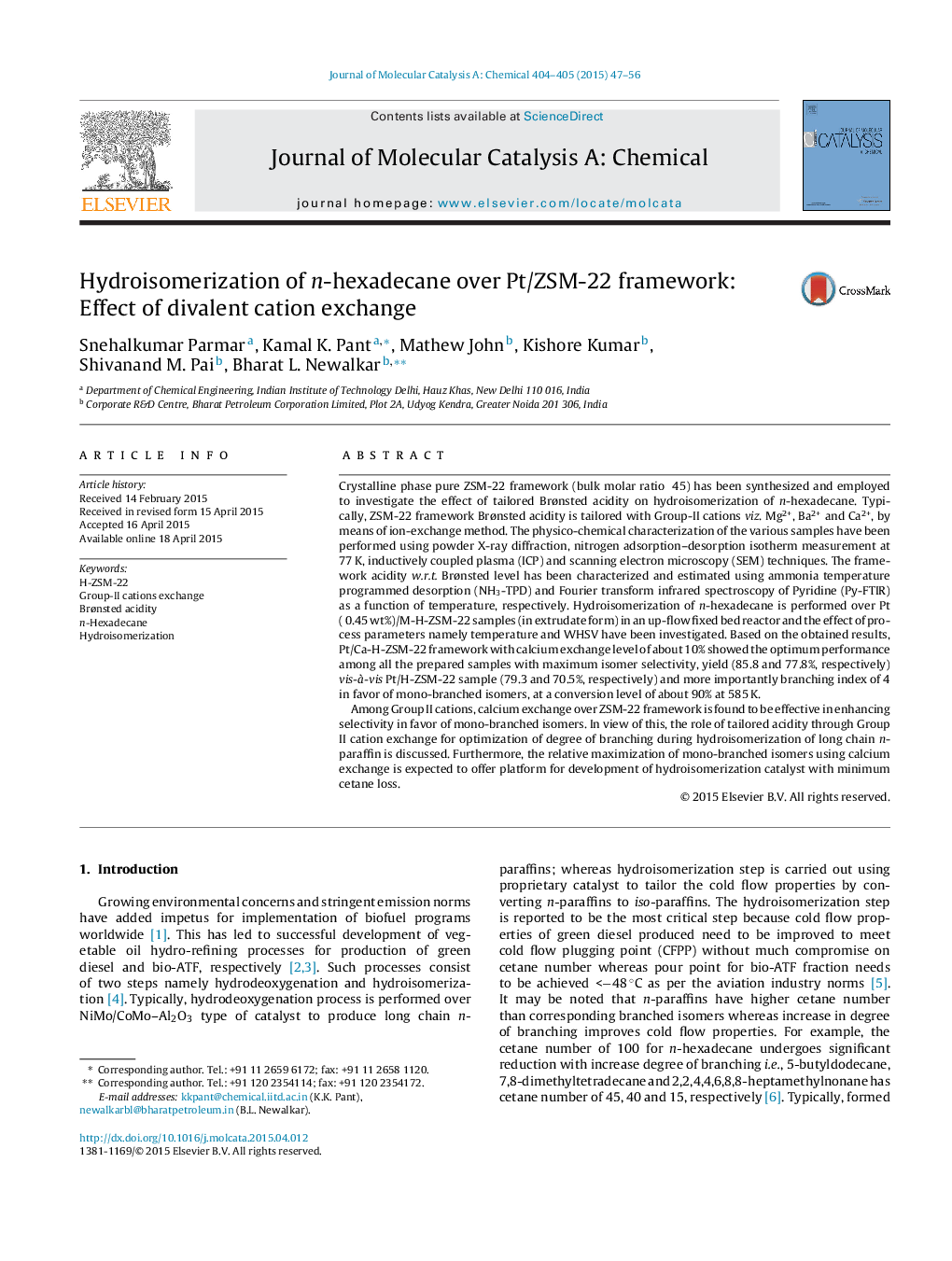| Article ID | Journal | Published Year | Pages | File Type |
|---|---|---|---|---|
| 64898 | Journal of Molecular Catalysis A: Chemical | 2015 | 10 Pages |
•Hydroisomerization of n-hexadecane is performed over Pt/ZSM-22 framework.•The framework acidity of H-ZSM-22 framework is tailored via Group-II cations.•Framework acidity is estimated by NH3-TPD and Py-FTIR techniques.•Pt/Ca-H-ZSM-22 is found suitable with highest selectivity for monobranched isomers.
Crystalline phase pure ZSM-22 framework (bulk molar ratio ~45) has been synthesized and employed to investigate the effect of tailored Brønsted acidity on hydroisomerization of n-hexadecane. Typically, ZSM-22 framework Brønsted acidity is tailored with Group-II cations viz. Mg2+, Ba2+ and Ca2+, by means of ion-exchange method. The physico-chemical characterization of the various samples have been performed using powder X-ray diffraction, nitrogen adsorption–desorption isotherm measurement at 77 K, inductively coupled plasma (ICP) and scanning electron microscopy (SEM) techniques. The framework acidity w.r.t. Brønsted level has been characterized and estimated using ammonia temperature programmed desorption (NH3-TPD) and Fourier transform infrared spectroscopy of Pyridine (Py-FTIR) as a function of temperature, respectively. Hydroisomerization of n-hexadecane is performed over Pt (~0.45 wt%)/M-H-ZSM-22 samples (in extrudate form) in an up-flow fixed bed reactor and the effect of process parameters namely temperature and WHSV have been investigated. Based on the obtained results, Pt/Ca-H-ZSM-22 framework with calcium exchange level of about 10% showed the optimum performance among all the prepared samples with maximum isomer selectivity, yield (85.8 and 77.8%, respectively) vis-à-vis Pt/H-ZSM-22 sample (79.3 and 70.5%, respectively) and more importantly branching index of 4 in favor of mono-branched isomers, at a conversion level of about 90% at 585 K.Among Group II cations, calcium exchange over ZSM-22 framework is found to be effective in enhancing selectivity in favor of mono-branched isomers. In view of this, the role of tailored acidity through Group II cation exchange for optimization of degree of branching during hydroisomerization of long chain n-paraffin is discussed. Furthermore, the relative maximization of mono-branched isomers using calcium exchange is expected to offer platform for development of hydroisomerization catalyst with minimum cetane loss.
Graphical abstractFigure optionsDownload full-size imageDownload high-quality image (97 K)Download as PowerPoint slide
